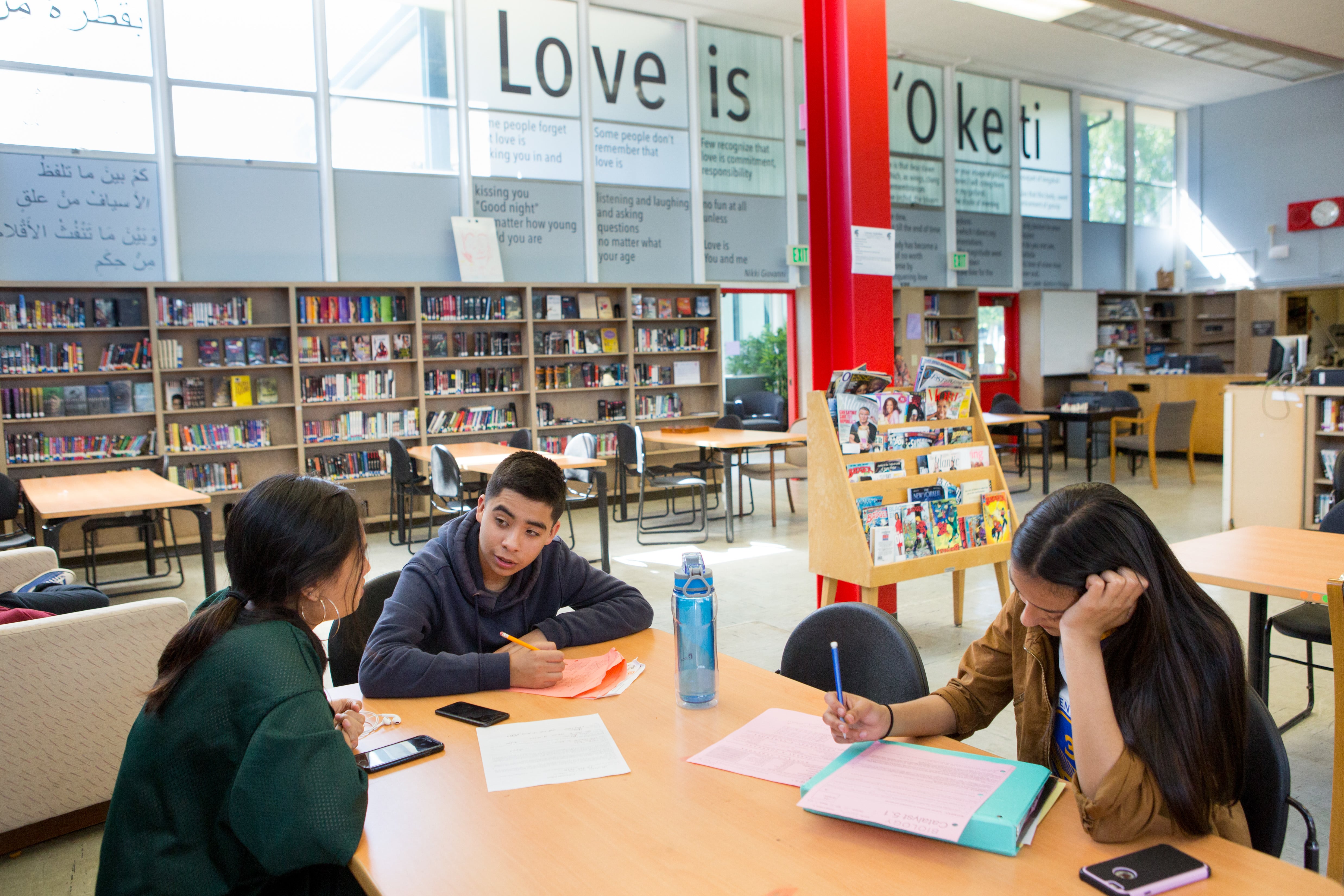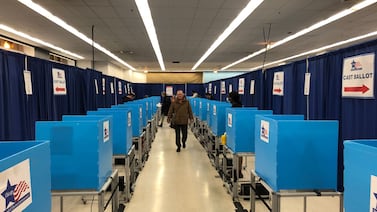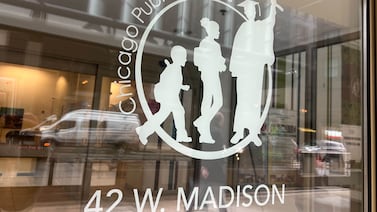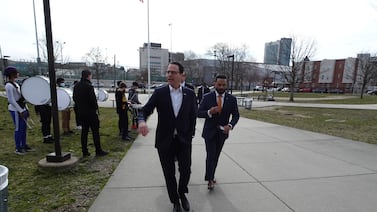Sign up for Chalkbeat’s free weekly newsletter to keep up with how education is changing across the U.S.
The nation’s top colleges are likely to enroll fewer Black, Latino, and Native American students after the Supreme Court ruled Thursday that colleges and universities essentially cannot consider race as a factor in the admissions process.
The ruling severely restricts colleges’ ability to use affirmative action to create more racially diverse campuses, and will likely curtail broader efforts to fight for racial equity in higher education.
Writing for the majority, Chief Justice John Roberts said that Harvard and the University of North Carolina’s race-conscious admissions programs had violated the equal protection clause of the U.S. Constitution, which bars discrimination, because they “lack sufficiently focused and measurable objectives warranting the use of race, unavoidably employ race in a negative manner, involve racial stereotyping, and lack meaningful end points.”
“Eliminating racial discrimination means eliminating all of it,” Roberts wrote.
That bar will make it exceedingly difficult for colleges and universities to consider race as part of their admissions process going forward.
Roberts’ majority opinion did leave open a small window for how colleges could consider race in admissions. “Nothing in this opinion should be construed as prohibiting universities from considering an applicant’s discussion of how race affected his or her life, be it through discrimination, inspiration, or otherwise,” the chief justice wrote.
In dissent, Justice Sonia Sotomayor described this as a meaningless concession — “nothing but an attempt to put lipstick on a pig.”
“The Court’s opinion circumscribes universities’ ability to consider race in any form by meticulously gutting respondents’ asserted diversity interests,” wrote Sotomayor. “Yet, because the Court cannot escape the inevitable truth that race matters in students’ lives, it announces a false promise to save face and appear attuned to reality. No one is fooled.”
Nine states — including California, Florida, Michigan, and Washington — already ban affirmative action at public colleges and universities.
This decision stems from two cases that were brought before the court by Students for Fair Admissions, an organization headed by Edward Blum, who has spent years fighting affirmative action.
Students for Fair Admissions sued Harvard and the University of North Carolina over their race-conscious admissions policies, arguing that they were unfair and discriminatory. The group alleged that Harvard’s policies, in particular, discriminated against Asian American applicants. The universities countered that they needed to take race into account to build a diverse student body, which brings educational benefits to the schools.
The decision has big implications for students looking to attend the nation’s most competitive colleges, which are more likely to consider race as a factor in admissions.
“We know that Hispanic and Black students are less college-going than their white counterparts. We know that they’re coming from less-resourced secondary schools,” said Kate Peltz, a college counselor who’s written about how ending affirmative action could affect students of color. “The process is already harder for kids from underrepresented backgrounds, and it’s about to become more so.”
But the ruling likely will have little effect on the vast majority of college students who attend less selective schools, such as community colleges, which accept most students who apply.
Here are three major ways the ruling is likely to affect students who are applying to college:
Black, Latino, and Native students will be less likely to get into top colleges
Officials at several selective colleges have said they expect the numbers of Black and Latino students, in particular, to decline if colleges are essentially no longer permitted to consider student race as part of a holistic admissions review.
An expert working on behalf of Harvard, for example, estimated that getting rid of race-conscious admissions would cause Black enrollment in Harvard’s freshman class to fall from 14% to 6%, and Hispanic enrollment to drop from 14% to 9%. White and Asian American enrollment, meanwhile, would grow.
Data from states that previously banned affirmative action also provide a look at what may happen nationwide. After California and Michigan got rid of affirmative action, the share of Black, Latino, and Indigenous students at several of the most selective colleges fell sharply. Those figures tended to tick back up with time, but never fully rebounded — and they still fail to represent the racial diversity of high school graduates in those states, the Boston Globe reported.
When colleges become less racially diverse, students of color often feel the schools are less welcoming — which could further depress the number of Black and Latino students on campus. That matters because Black and Latino students are more likely to benefit from the social capital that comes from attending a top college.
Colleges in states that axed affirmative action have tried alternatives to create racially diverse classes. That includes accepting a certain percentage of top high school graduates, recruiting from high schools that enroll large shares of underrepresented students, and giving preference to students from low-income families. But researchers and many college officials say those methods don’t work as well as explicitly taking race into account.
“There is no race-neutral alternative to being able to consider race,” Femi Ogundele, an official at the University of California, Berkeley, told the Los Angeles Times recently.
On top of that, colleges may not want to take new steps to ensure racial diversity for fear of violating the Supreme Court’s latest ruling.
“I think people imagine that we’ll find creative ways of working around the court’s decision, like using an applicant’s ZIP code as a stand-in for their race. But we won’t,” said Lee Bollinger, the outgoing president of Columbia University who was a defendant in a previous landmark Supreme Court case that upheld affirmative action. “We can’t knowingly violate the U.S. Supreme Court’s decision. We’ll have to abide by it, no matter how painful.”
Students, and their school counselors, will have to navigate a new college admissions terrain
The Supreme Court’s ruling will have the biggest effects on high-achieving high schoolers who are applying to highly selective colleges, as those institutions are more likely to use race as a factor in admissions.
A quarter of colleges considered race in admissions to some degree, according to a 2019 survey from the National Association for College Admission Counseling that was cited in the court case. But 60% of the most selective colleges — those that accept 4 in 10 applicants or less — considered an applicant’s race, according to a 2015 survey from the American Council on Education.
Those colleges serve a small slice of the nation’s undergraduates. This fall, colleges that admitted half of their students or less enrolled just 10% of U.S. undergraduates, according to data from the National Student Clearinghouse.
For those students, this ruling may change which colleges they apply to and what information they share on their applications.
That’s left many school counselors and college coaches worried about whether they’ll have time to research and advise students on changing admissions policies. Many low-income students of color — whose school counselors tend to have higher student caseloads — won’t have someone to provide that kind of hands-on help.
“It’s already a complicated job that’s underresourced,” said Austin Buchan, a senior vice president at College Possible, a nonprofit organization that helps students from low-income families apply to college. “And this is just not going to do us any favors.”
Personal essays, which often ask students about their identity, values, and how they’d contribute to campus life, are likely to be especially fraught.
During both sets of oral arguments, several justices asked whether students would still be permitted to talk about certain personal experiences, such as overcoming racial discrimination or taking pride in their family’s cultural traditions, if race could not be considered.
A lawyer for Students for Fair Admissions said “culture, tradition, heritage are all not off limits for students to talk about and for universities to consider” so long as the college awarded credit for “something unique and individual in what they actually wrote, not race itself.” Some justices noted that distinction could be hard for colleges to make.
For that reason, some college access coaches and school counselors worry that students will avoid talking about anything that could hint at their race, even if it could enhance their application.
“Students might self-censor,” said Marie Bigham, the executive director of ACCEPT, a nonprofit that advocates for racial equity in college admissions. “Racial identities and experiences are just so interwoven with our lives in the United States. How do you pull that apart effectively in a way that’s not going to be constantly scrutinized?”
Some students of color may lower their college ambitions
School counselors and college coaches say Black and Latino students already hold off on applying to the nation’s top colleges, or worry they don’t deserve their spots when they get accepted. The latest Supreme Court ruling, they said, could cause more students to question their abilities and whether they want to pursue higher education — at a time when there’s already been a spike in students skipping college.
“It’s compounding a narrative that many students feel reinforced at each step of the process,” said Buchan, of College Possible. He worries the ruling will cause more students to think: “See, I told you higher ed isn’t for me.”
Some research also supports the idea that student motivation suffers when affirmative action is off the table. Natalie Bau, an economics professor at UCLA, looked at what happened when Texas lifted its ban on considering race in college admissions.
She and her colleagues found that Black and Latino high schoolers had better school attendance, higher SAT scores, higher grades, and applied to more colleges — and the effects were greatest for students with the highest test scores.
The thinking is “before it seemed too hard” to get into a more selective college, and “now it becomes attainable, so it makes sense to put in that extra effort,” Bau said. With a nationwide ban on affirmative action, Bau said, student motivation may slip.
“Underrepresented minority students might reduce their effort in high school and that might result in lower test scores, lower grades, lower attendance, and fewer applications to selective institutions,” Bau said. “That might make this under-application problem worse.”
Kalyn Belsha is a national education reporter based in Chicago. Contact her at kbelsha@chalkbeat.org.







